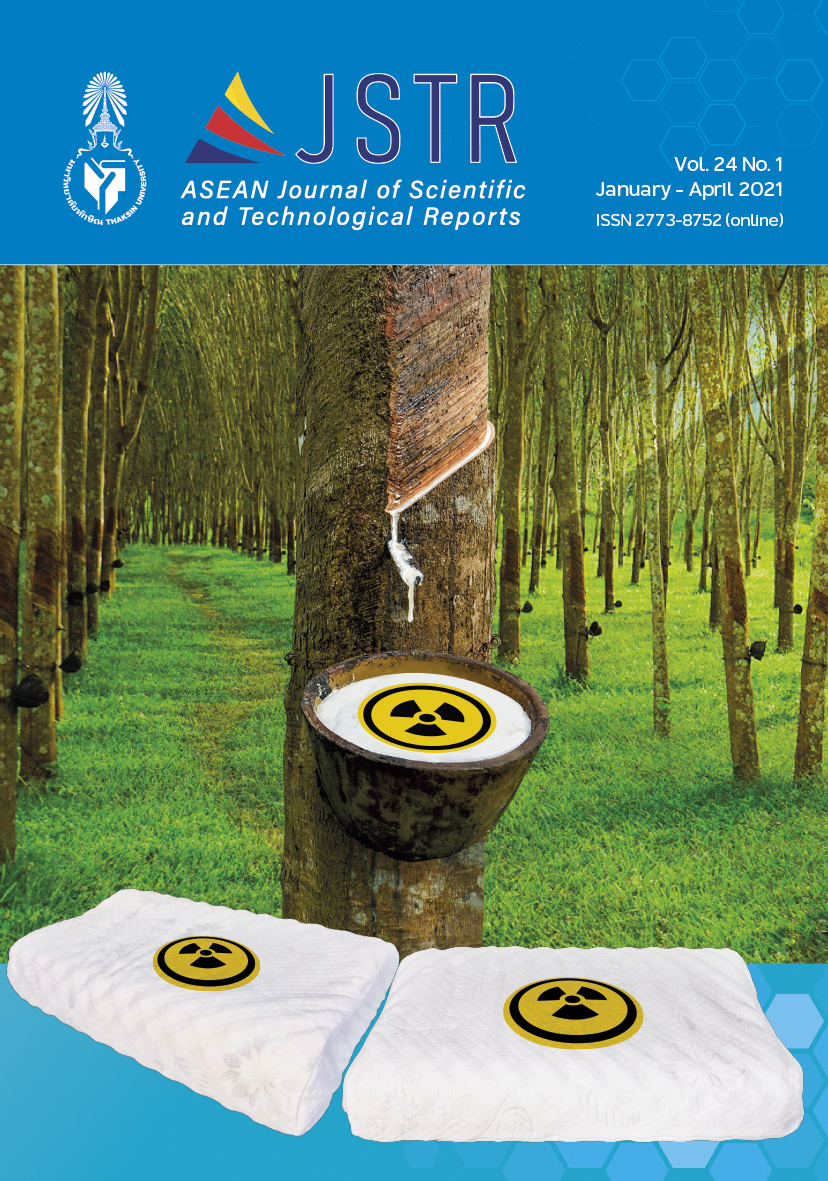Spatial Analysis of Mangrove Forest Area Change in Prasae River Mouth of Rayong Province Using Satellite Imageries
Main Article Content
Abstract
The effect of spatial change on the coastal area affected the status of mangrove forest. Richness of mangrove forest of Prasae estuary has been changed over time due to human activities. This research aimed to use remote sensing technology to investigate the richness of the mangrove forest in the coastal of Prasae estuary in years 2009, 2014, and 2019. Four sub-districts of Klang district, Rayong province were analyzed; namely Paknam Krasae, Pang Rad, Nern Koh, and Klong Pun. Normalized Difference Vegetation Index was evaluated for indicated of biomass that covers land area. The results showed that overall accuracy each year was 80.56, 79.17, and 82.64 %, respectively. The areas of mangrove forest in 2009, 2014, and 2019 were 11,316.48, 18,058.19, and 10,060.86, rai respectively. The prediction of the mangrove forest areas using CA-Markov model indicated that the mangrove area in 2029 would be 7,662.14 rai, which approximately decreases for 23 %
Article Details

This work is licensed under a Creative Commons Attribution-NonCommercial-NoDerivatives 4.0 International License.
References
Satumanatpan, S. (2011). Coastal management: Integration to sustainability. Nakhon Pathom: Mahidol University, Inc.
Seejun, P. (2005). Coast-land and coastal zone (1st Ed). Bangkok: Department of Marine and Coastal Resources.
Department of Marine and Coastal Resources. (2013). Manual of mangrove knowledge (5th Ed). Bangkok: Ministry of Natural Resources and Environment.
Department of Marine and Coastal Resources. (2015). Geo-information of marine and coastal resources (2ndEd). Chon Buri: Pattaya Graphic Print, Inc.
Suppawimut, W. (2019). Application of mangrove index for mangrove forest classification using landsat 8 imageries: A case study of Thung Kha-Sawi bay, Chumphon province. In The 4th National Conference on Science and Technology of Southern Network 2019, 468–475, February 7–8, 2019, Songkhla: Songkhla Rajabhat University.
Hua, A.K. (2017). Application of CA-Markov Model and land use/land cover changes in Malacca River Watershed, Malaysia. Applied Ecology and Environmental Research, 15(4), 605–622.
Imsawas, K., & Pleerux, N. (2015). Monitoring oil palm cultivation areas in Chon Buri Province. Journal of REmote Sensing and GIS Association of Thailand, 16(1), 18–27.
Intacharoen, P., Thaipichitburapha, P., Buranapratheprat, A., & Na-u-dom, T. (2021). Geoinformatics applications to spatial relation assessment of land use and water quality in the Prasae watershed, Rayong province. Rajamangala University of Technology Srivijaya Research Journal, 13(1), 174–190.
Lee, T. M., & Yeh, H. C. (2009). Applying remote sensing techniques to monitor shifting wetland vegetation: A case study of Danshui river estuary mangrove communities, Taiwan. Ecological Engineering, 35(4), 487–496.
Eastman, J. R. (2016). TerrSet geospatial monitoring and modelling system manual. Worcester, MA. USA: Clark Labs, Clark University.
Yasowong, P., & Jarussakulchai, C. (2013). Indexing remote sensing image retrieval using clustering and vegetation indices. Journal of Information Science and Technology, 4(2), 1–8.
Department of Marine and Coastal Resources. (2018). Data base of marine and coastal resources of Rayong Province. Bangkok: Ministry of Natural Resources and Environment.


